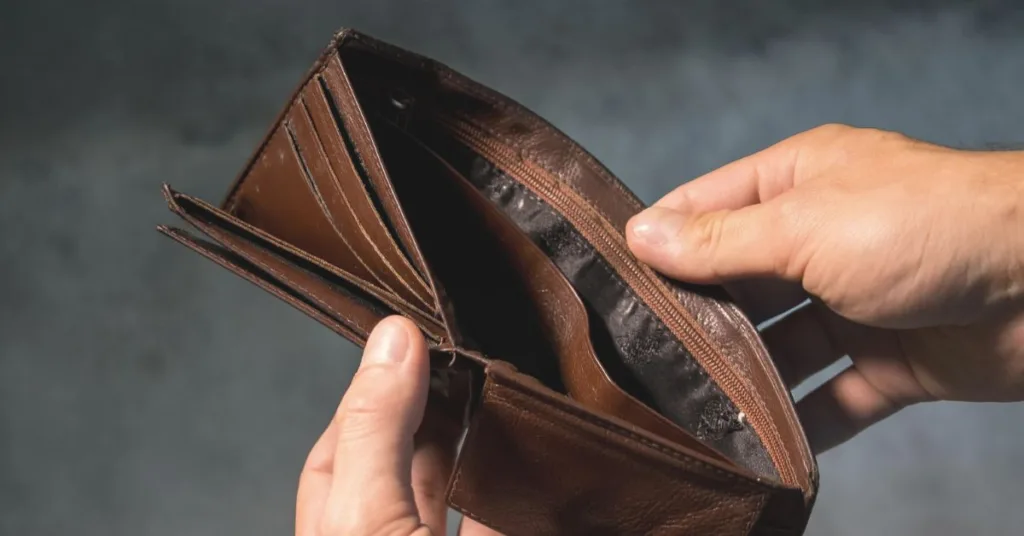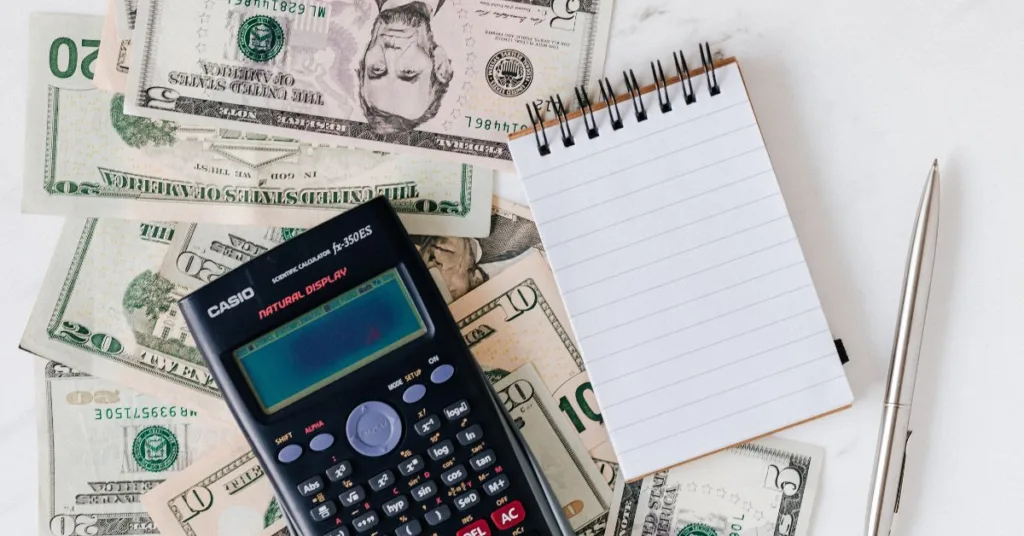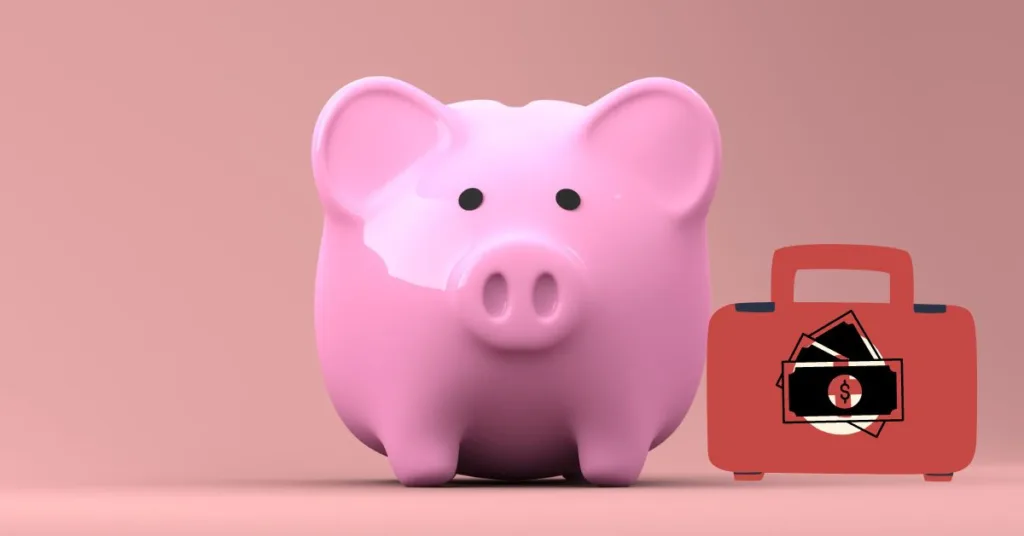This post may contain affiliate links to products or services. I may receive a commission for purchases made through these links with no cost on you. Please read my disclosure for more information.
Living below your means is a cornerstone of frugality. It means ensuring that your expenses are less than your income, allowing you to save and invest for the future.
Frugality isn’t just about saving a few dollars here and there; it’s a lifestyle choice that can lead to financial freedom, reduced stress, and increased peace of mind.
In this post, we’ll explore the fundamental principles of frugal living and its benefits, as well as provide practical tips for incorporating them into your daily life.
WHAT IS FRUGALITY?
Frugality can be defined as the practice of living simply and economically, avoiding wastefulness, and making conscious choices to spend money wisely.
At its core, frugality is about living below your means, which means spending less than you earn and being intentional about how you use your resources.
Frugality is often misunderstood as being cheap. But in reality, it’s about being resourceful and smart with your money, and making conscious choices about where and how you spend it.
Frugality isn’t about deprivation; it’s about prioritizing what’s truly important to you and finding creative ways to achieve your goals without overspending.
By embracing frugality and living below your means, you can break free from the cycle of consumerism and cultivate a more sustainable and fulfilling lifestyle.
KEY PRINCIPLES OF FRUGALITY
Frugality is more than just a financial tactic; it’s a lifestyle centered around key principles that promote wise resource management and financial stability.
Listed here are the fundamental principles of frugality and how they can pave the way to a more secure and fulfilling financial future:
1. Living Below Your Means
Living below your means is about aligning your expenses with your income and prioritizing your financial goals.
It means spending less than you earn and being mindful of your expenses.
One way to do this is by setting a budget that reflects your income and expenses.
** For instance, you might allocate a certain amount of money each month for groceries, utilities, transportation, and entertainment.
By sticking to your budget, you can ensure that you’re not overspending in any area and that you’re able to save and invest for the future.
Recommended reading: 7 Steps in Making a Budget
2. Maximizing Value
Frugality is also about maximizing the value of your resources.
This means getting the most bang for your buck and making smart spending choices. This may involve comparison shopping, seeking out discounts or sales, and prioritizing quality over quantity.
** For example, instead of buying brand-name products at full price, you might look for generic or store-brand alternatives that offer the same quality at a lower cost.
Or you might wait for sales or use coupons to save money on purchases.
By being mindful of where and how you spend your money, you can stretch your dollars further and achieve greater financial security.
Recommended reading: 21 Creative Ways to Save Money on Groceries
3. Prioritizing Needs Over Wants
Prioritizing needs over wants involves distinguishing between essential needs and discretionary wants and allocating resources accordingly.
It requires discipline and self-control to resist impulse purchases and focus on what truly matters.
Before making a purchase, ask yourself if it aligns with your values and priorities. Consider alternatives such as buying used items, borrowing or sharing with others, or DIYing to save money.
** For example, you are tempted to buy a designer handbag that you don’t need but wants to impress your friends.
However, you reminded yourself of your financial goals, such as saving for a down payment on a house.
You decided to forgo the handbag and prioritize your long-term financial well-being over immediate gratification.
4. Minimizing Waste
Minimizing waste involves reducing waste in all forms, including food, energy, and material possessions.
This may include practicing sustainability, repurposing or repairing items instead of discarding them, and adopting a minimalist mindset.
Example of minimizing waste is to plans your meals for the week, shops with a grocery list to avoid buying unnecessary items and repurposes leftovers to create new meals.
By minimizing waste, you not only save money but also contributes to environmental sustainability.
Recommended reading: 21 Creative Ways to Save Money on Groceries
5. Embracing Simplicity
Embracing simplicity involves simplifying one’s lifestyle and reducing reliance on material possessions.
It means finding contentment and satisfaction in non-material aspects of life, such as experiences, relationships, and personal growth.
** For example, you have adopted a minimalist lifestyle as part of your frugal approach. You declutter your home, sells or donates items you no longer need, and focuses on experiences rather than material possessions.
By embracing simplicity, you can find contentment and fulfillment in the things that matter most to you.
6. Prioritizing Financial Goals
Frugality empowers you to prioritize your financial goals and work towards achieving them.
Whether your goals include paying off debt, saving for a down payment on a house, or building a retirement nest egg, frugality can help you get there faster.
** For example, you might set specific, measurable, and achievable goals for yourself, such as paying off $10,000 in credit card debt within the next year or saving $500 per month towards a down payment.
By breaking your goals down into smaller, actionable steps, you can make steady progress and stay motivated along the way.
7. Long-Term Commitment
Finally, it’s important to view frugality as a long-term commitment rather than a short-term fix.
Frugality isn’t just about cutting costs here and there; it’s about adopting a mindset and lifestyle that prioritize financial health and well-being.
By making frugality a core part of your identity and values, you can ensure a sustainable and fulfilling financial future for years to come.
PRACTICAL TIPS ON LIVING BELOW YOUR MEANS
Track Your Expenses: Keep a detailed record of your income and expenses to identify areas where you can cut back and save money.
Creating and sticking to a budget is essential for living below your means. Start by tracking your expenses and identifying areas where you can cut back. Allocate your income towards necessities first, such as housing, food, and transportation, and then prioritize savings and debt repayment.
Check out: Expense Trackers in my Etsy shop.
Set Financial Goals: Establish clear financial goals, such as paying off debt, building an emergency fund, or saving for a major purchase. Break them down into smaller, manageable steps and track your progress regularly.
Reduce Fixed Expenses: Look for ways to lower your fixed expenses, such as housing, transportation, and utilities. Consider downsizing your living space, carpooling, or negotiating lower rates with service providers.
Cut Discretionary Spending: Review your discretionary spending, such as dining out, entertainment, and subscriptions. Find ways to trim unnecessary expenses without sacrificing enjoyment, such as dining out less frequently or canceling unused subscriptions.
Embrace DIY: Learn to do things yourself rather than paying others to do them for you. DIY projects can save you money and give you a sense of accomplishment and self-sufficiency.
Practice Contentment: Focus on gratitude and contentment rather than constantly striving for more. Cultivate a mindset of abundance and appreciate the simple pleasures in life.
BENEFITS OF FRUGALITY AND LIVING BELOW YOUR MEANS
Frugality offers numerous benefits that can positively impact various aspects of life. Here are some of the key benefits:
1. Financial Stability and Security
Embracing frugality helps you live within your means and spend less than you earn. By minimizing unnecessary expenses, you can build savings, pay off debt, and achieve greater financial stability.
2. Debt Reduction and Wealth Building
Adopting a frugal lifestyle allows you to allocate more resources towards paying off debt. By prioritizing debt repayment and avoiding new debt, you can become debt-free faster and reduce financial stress.
3. Increased Freedom and Flexibility
Frugality provides you with greater financial freedom and flexibility. You can afford to take risks, pursue opportunities, and make choices based on your values rather than financial constraints.
4. Environmental Sustainability
Frugal living often aligns with sustainability principles by promoting mindful consumption and reducing waste. By consuming less and reusing items, you can lessen your environmental footprint and contribute to an eco-friendlier lifestyle.
5. Resourcefulness and Creativity
Frugality fosters resourcefulness and creativity in finding ways to save money and maximize value. You’ll learn to make the most of what you have, repurpose items, and find innovative solutions to everyday challenges.
6. Reduces Stress & Enhanced Well-Being
Living frugally can reduce financial stress and anxiety by providing a sense of control over your finances. Knowing you have savings and are prepared for emergencies can give you peace of mind and reduce money worries.
7. Savings and Investments
Frugality encourages you to save money for emergencies, future goals, and retirement. By consistently saving and investing, you can build wealth over time, secure your financial future, and achieve financial independence.
8. Minimalism and Simplification
Frugality often goes hand in hand with minimalism, which involves decluttering and simplifying your life. By owning fewer possessions and prioritizing experiences over material goods, you can experience greater clarity, focus, and contentment.
9. Improved Relationships
Frugality encourages you to prioritize experiences and relationships over material possessions. By spending quality time with loved ones and creating meaningful memories, you can strengthen your relationships and find fulfillment in non-material aspects of life.
10. Personal Growth
Adopting a frugal lifestyle can lead to personal growth and self-discovery. By challenging consumerist beliefs and reevaluating your priorities, you can gain a deeper understanding of yourself, your values, and what truly matters in life.
CONCLUSION
In conclusion, embracing frugality all about mastering the art of living below your means and making smart choices with your money.
It’s about taking control of your finances, maximizing your resources, and living a more intentional and fulfilling life.
It isn’t always easy, but the rewards are well worth the effort. By living below your means, prioritizing your financial goals, and maximizing the value of your resources, you can achieve greater financial stability, security, and freedom.
Remember, frugality is not about deprivation; it’s about living intentionally and aligning your spending with your values and goals.
Whether you’re just starting out on your frugal journey or looking to refine your existing habits, remember that every small step counts.
Start small, be consistent, and watch as your frugal habits transform your life for the better.
With determination, discipline, and a commitment to your financial well-being, you can embrace frugality and create a life of abundance, purpose, and fulfillment.
ACTION PLAN
1. Create a budget and track your expenses. Check out my free Monthly Budget Spreadsheet.
2. Set your financial goals (short-term, medium-term, and long-term goals).
3. Embrace a frugal lifestyle.
4. Regularly track your progress.
Recommended reading:





